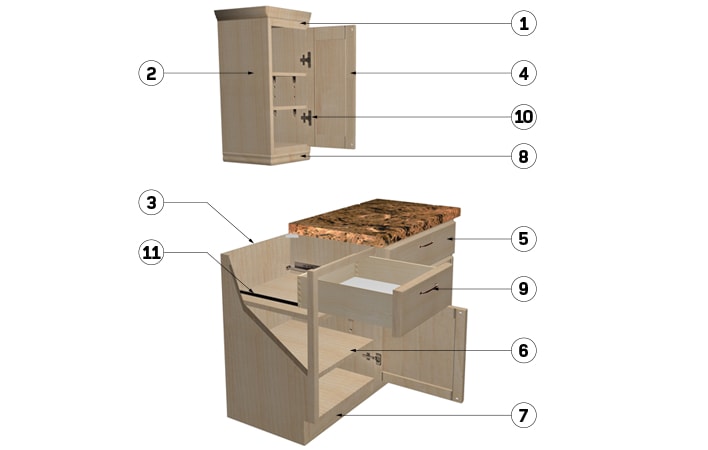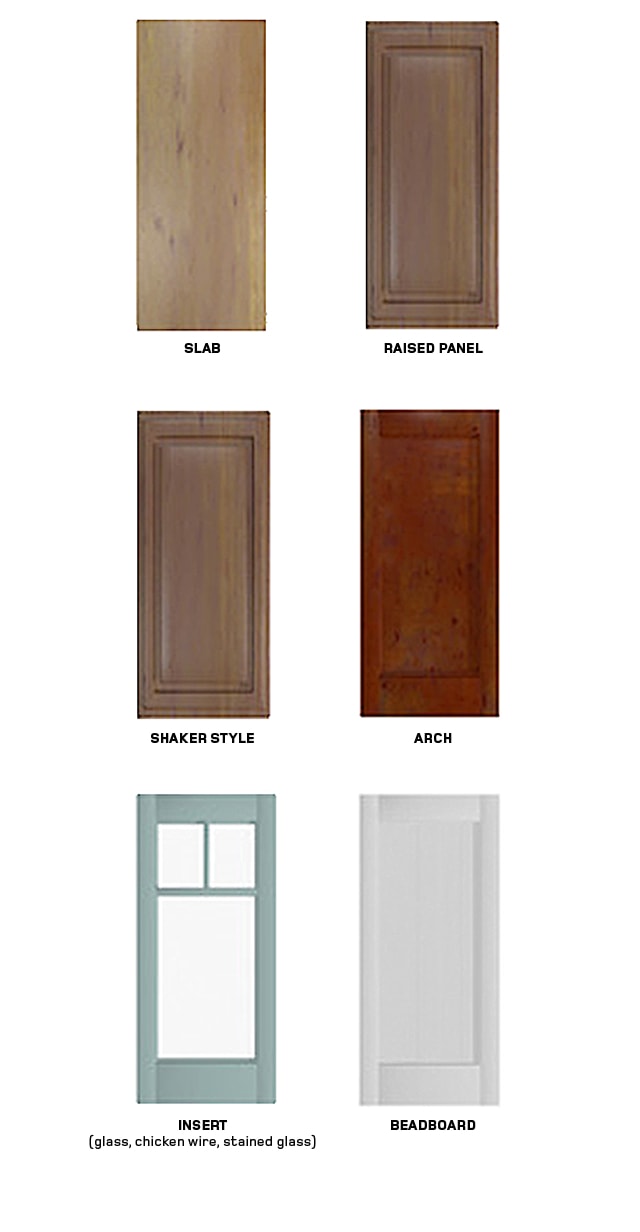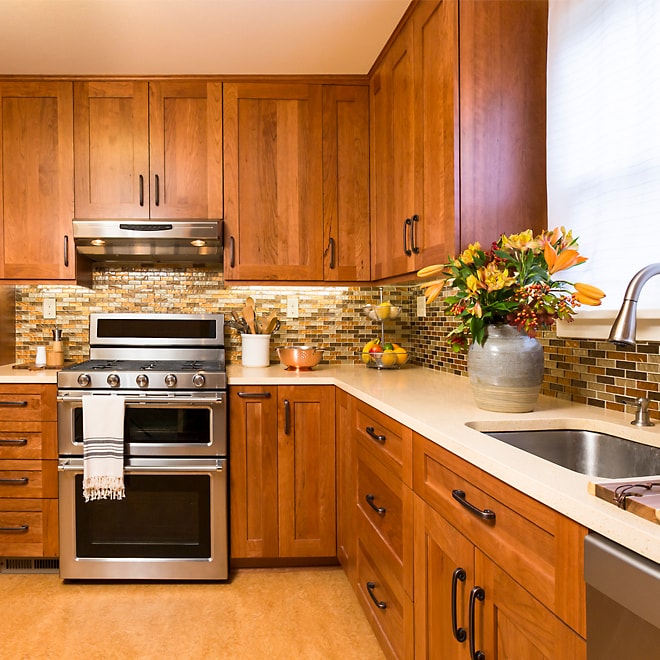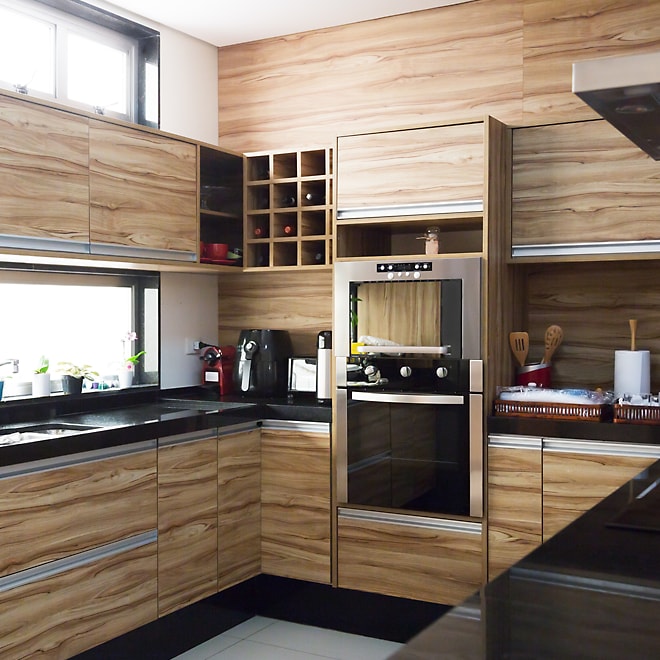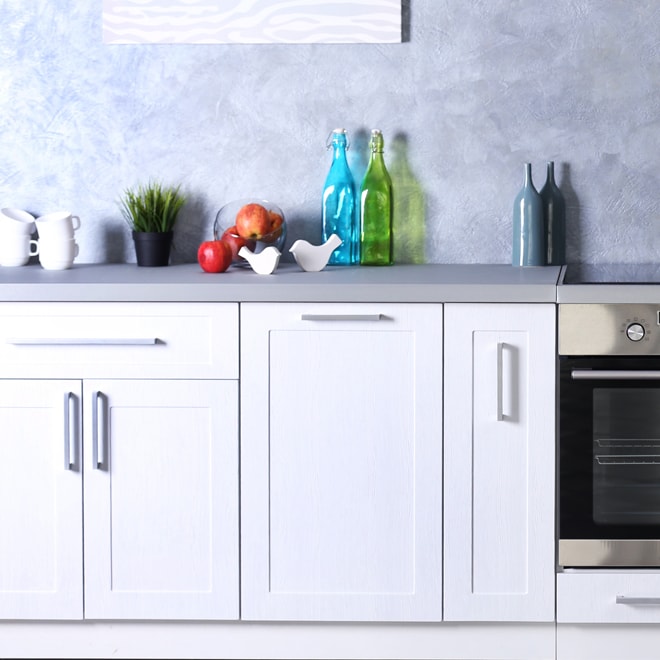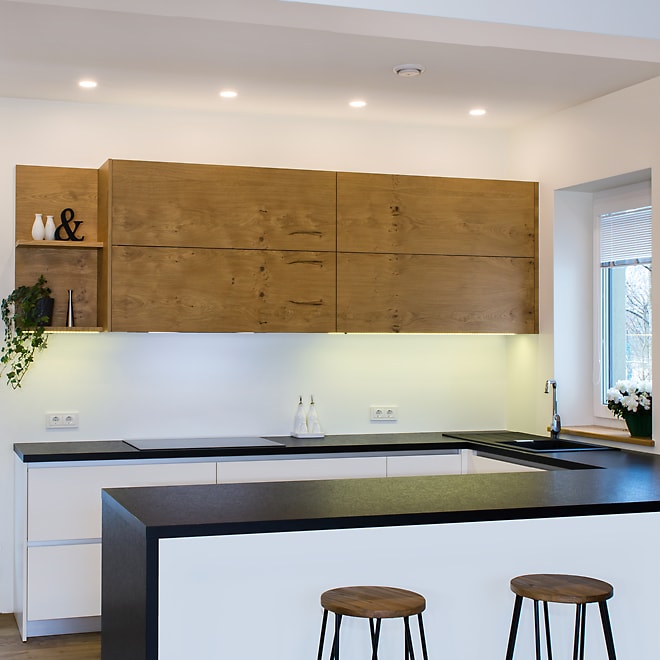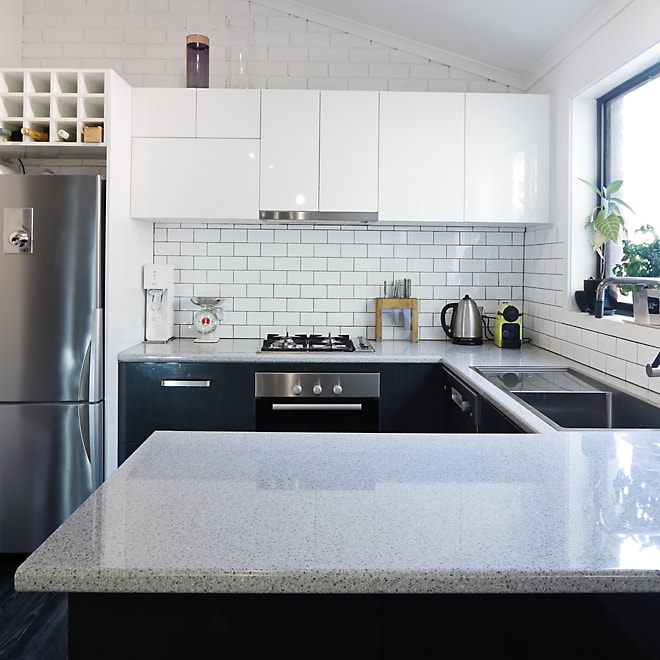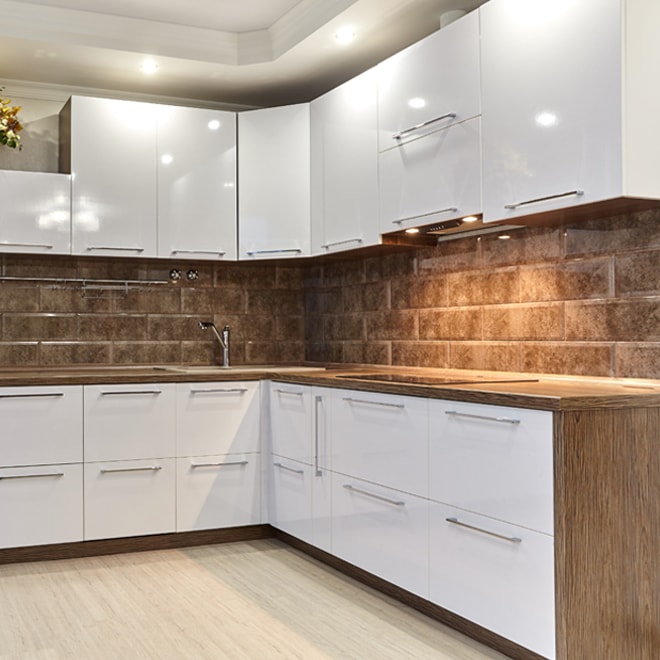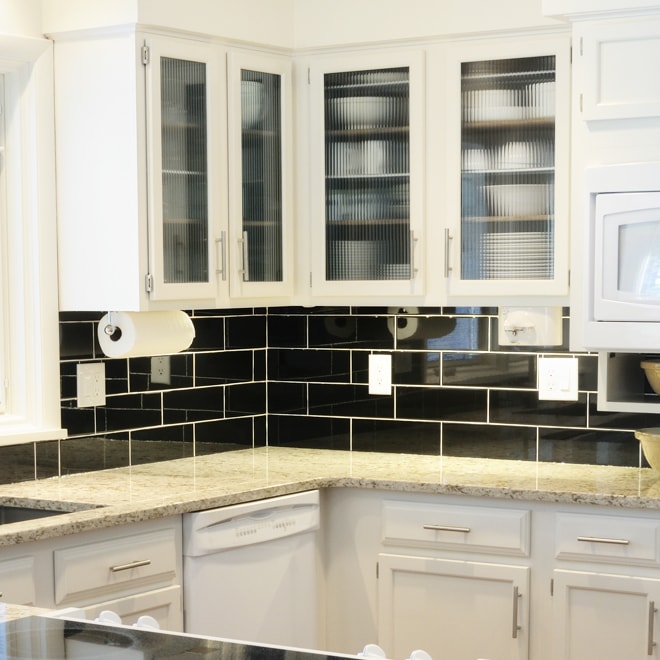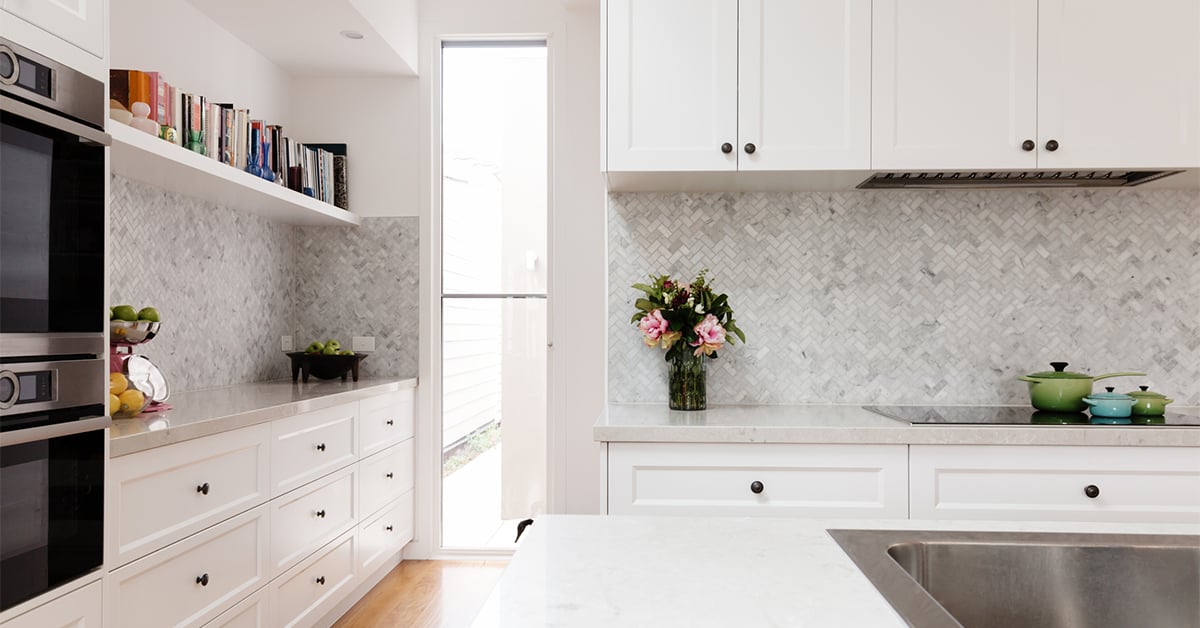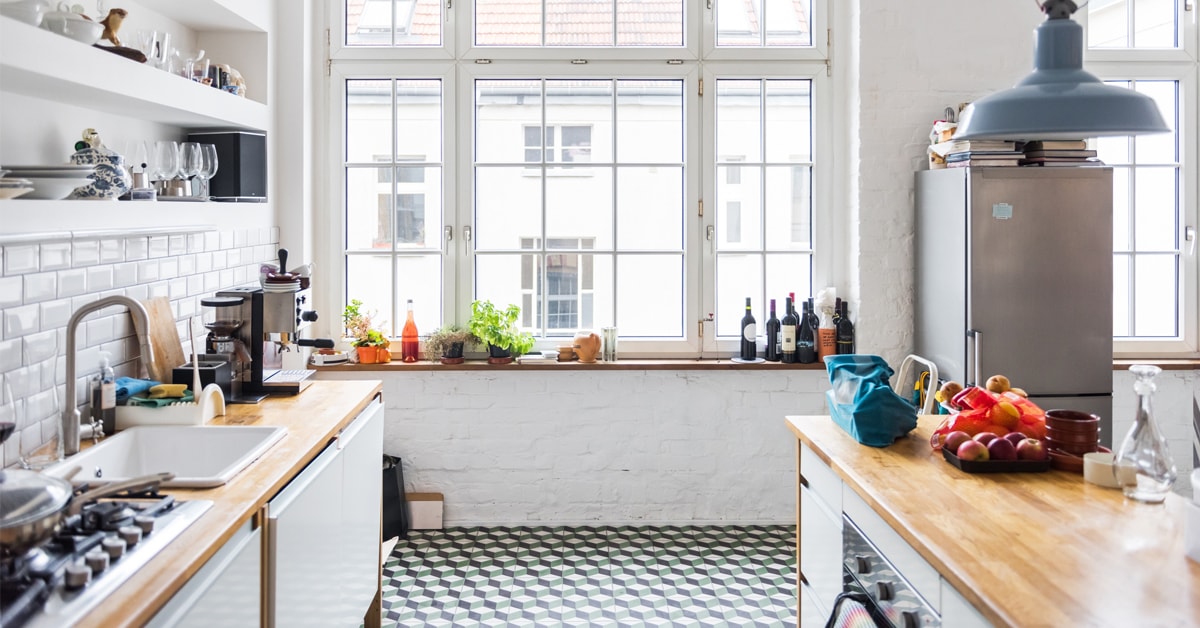3 types of cabinets, 3 construction methods
There are three main types of cabinets: base cabinets, wall cabinets and tall cabinets.
Base cabinets support the countertop. Their standard height is between 34 ½" and 36" and their standard depth varies between 24" and 30".
Wall cabinets hang on the wall and do not touch the floor. They can be 12", 15", 18", 30", 36" or 42" high. Their depth varies between 12" and 18". They are typically installed 18" above work surfaces and 54" above the floor.
Tall cabinets, for example pantries, are 84" to 94" high and come in standard depths of 12" to 18".
Within these 3 categories, cabinets are either stock (prefabricated), semi-custom or custom. When planning your kitchen renovations, determine how much you wish to spend on cabinets and how important durability and aesthetics are to you.
Base cabinets support the countertop. Their standard height is between 34 ½" and 36" and their standard depth varies between 24" and 30".
Wall cabinets hang on the wall and do not touch the floor. They can be 12", 15", 18", 30", 36" or 42" high. Their depth varies between 12" and 18". They are typically installed 18" above work surfaces and 54" above the floor.
Tall cabinets, for example pantries, are 84" to 94" high and come in standard depths of 12" to 18".
Within these 3 categories, cabinets are either stock (prefabricated), semi-custom or custom. When planning your kitchen renovations, determine how much you wish to spend on cabinets and how important durability and aesthetics are to you.
Types of cabinets
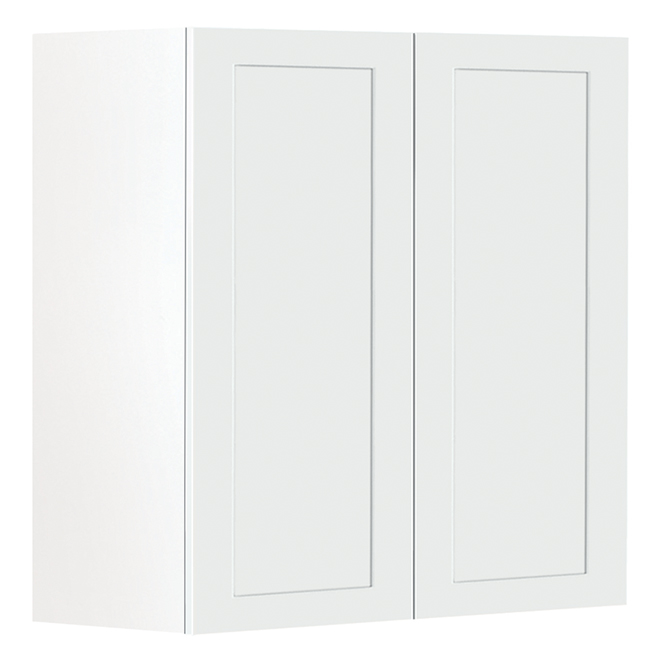
Stock cabinets
Sold pre-assembled in home improvement stores or kitchen centres, stock cabinets come in standard sizes.
Advantages
Disadvantage
Shop stop cabinetsAdvantages
- Economical
- Shorter lead time
- Ideal for limited budgets
- Made in standard heights
Disadvantage
- Limited choice of configurations and finishes
Semi-custom cabinets
Semi-custom cabinets come in standard sizes. They are made to order and offer more personalized options.
Advantages
Disadvantage
Advantages
- More options than stock cabinets in terms of design, storage and style
- Wider choice of finishes and materials
- For mid-range budgets
Disadvantage
- Longer lead time for delivery than stock cabinets
Custom cabinets
Custom cabinets are made by kitchen designers according to the client's specifications.
Advantages
Disadvantages
Advantages
- Custom-made
- Fit the specifications of each kitchen
- Wider choice of materials, finishes and designs
- Generally made from higher-quality materials
Disadvantages
- Longest lead time
- Costly









